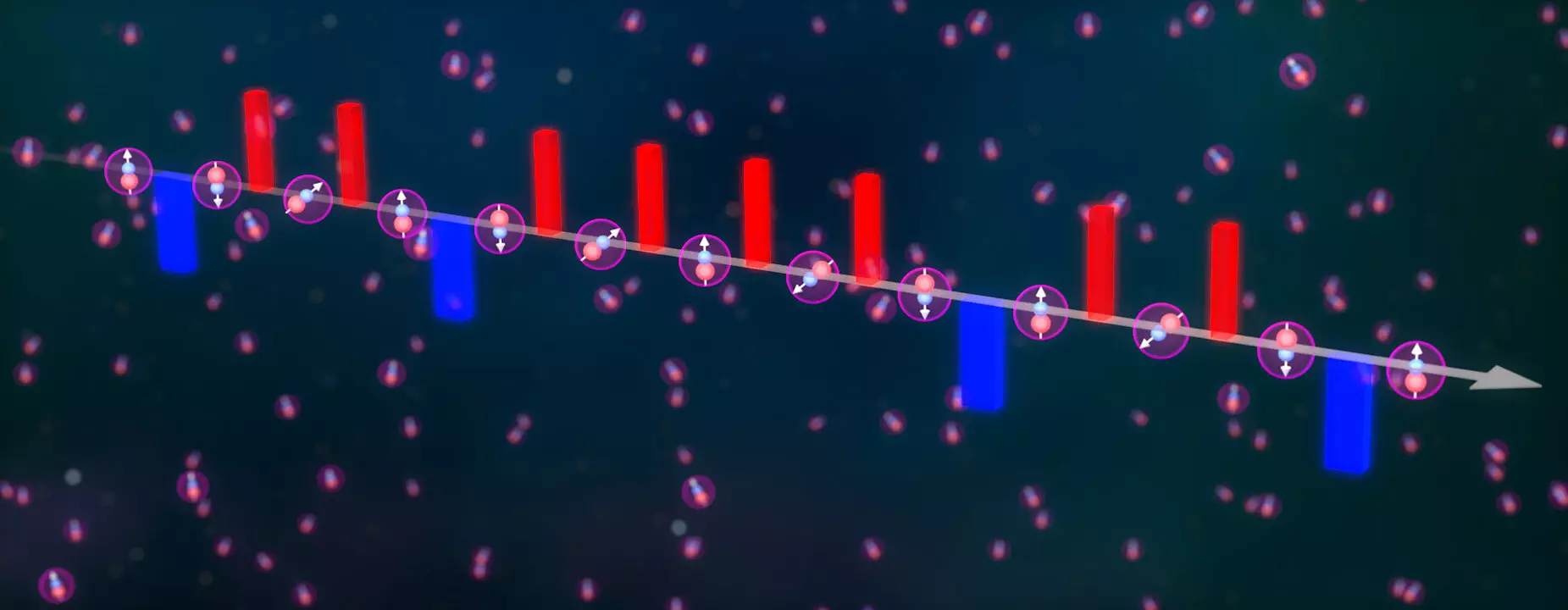The world of quantum mechanics is intricately woven with phenomena that are not only theoretically profound but also foundational to many modern technologies. Among these phenomena, the interactions between quantum spins exhibit a fascinating array of behaviors that can lead to technological advances in areas such as superconductivity and magnetic materials. Despite the theoretical groundwork laid by physicists, creating controllable systems in laboratory environments to mimic these interactions remains a significant challenge. A recent study led by Jun Ye at JILA, in collaboration with Mikhail Lukin’s group at Harvard University, marks a pivotal step forward in addressing this challenge by harnessing the principles of Floquet engineering to manipulate ultracold potassium-rubidium molecules.
Floquet engineering emerges as a breakthrough technique that provides a means of fine-tuning quantum interactions through periodic microwave pulses. This approach leverages the concept of a “quantum strobe light.” Just as a strobe light can create varied visual effects by modulating the speed and intensity of its flashes, Floquet engineering enables scientists to induce distinct quantum behaviors by intricately controlling the interaction dynamics of particles. The innovative work of Ye’s team involved developing an advanced arbitrary waveform generator, which allowed them to exponentially increase the number of microwave pulses applied to the system. This extension is crucial; higher pulse rates open the door to novel interactions that were previously unobservable since the interactions could be dynamically altered in ways that traditional methods did not permit.
The choice of ultracold potassium-rubidium molecules for this experimental framework is particularly insightful. These polar molecules hold promise for advancing quantum simulations due to their rich energy structure influenced by multiple physical constants. Calder Miller, the study’s first author, emphasizes that by effectively engineering molecular interactions, there’s potential to create entangled states that enhance sensitivity to new physical phenomena. This is particularly relevant in the quest to uncover previously hidden aspects of quantum mechanics that could exist beyond established theoretical models.
One of the standout observations from this study was the emergence of two-axis twisting dynamics—an aspect of quantum behavior where particles are simultaneously influenced along two different axes. This phenomenon shows promise in facilitating the creation of highly entangled states, which are crucial for improving the precision of quantum measurements and sensors. The researchers manipulated their quantum system effectively to identify and harness this behavior, leading to the potential generation of spin-squeezed states. These states are characterized by reduced uncertainty in one component of a spin system, amplifying sensitivity in measurements like spectroscopy.
As Annette Carroll, a collaborator in the study, reflects on this success: achieving initial signatures of two-axis twisting was a thrilling milestone. The anticipation that accompanied these findings reflects the broader scientific journey—filled with uncertainties but ultimately leading to significant advancements.
This work at JILA is complemented by concurrent research conducted by another team at the University of Colorado Boulder, led by James Thompson. By utilizing cavity quantum electrodynamics (cavity QED), Thompson’s laboratory has also explored two-axis twisting, underscoring the diversity of methodologies being employed within the field. The existence of multiple pathways to unveil the nuances of quantum mechanics amplifies the impact of these discoveries.
Looking forward, the researchers at JILA are optimistic about enhancing their detection capabilities. The next logical step in this scientific exploration involves not just observing these dynamic interactions but also verifying the entangled states created in their system. Detection of entangled states remains a critical challenge, as verifying their existence can substantiate the advancement of quantum mechanics and its applications in guiding future technology.
The intricate dance of particles governed by quantum mechanics stands at the cusp of innovation, largely thanks to advances like those exhibited through Floquet engineering. The future holds a wealth of possibilities for exploring new quantum states and phenomena, promising to deepen our understanding of the quantum world and pave the way for new technologies in quantum sensing and simulations. The intertwined efforts of researchers across various institutions underline the collaborative spirit driving quantum science forward, with the hope that these efforts will illuminate the path to future breakthroughs.


Leave a Reply